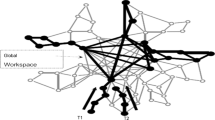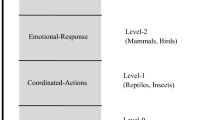Abstract
Reviewing recent closely related developments at the crossroads of biomedical engineering, artificial intelligence and biomimetic technology, in this paper, we attempt to distinguish phenomenological consciousness into three categories based on embodiment: one that is embodied by biological agents, another by artificial agents and a third that results from collective phenomena in complex dynamical systems. Though this distinction by itself is not new, such a classification is useful for understanding differences in design principles and technology necessary to engineer conscious machines. It also allows one to zero-in on minimal features of phenomenological consciousness in one domain and map on to their counterparts in another. For instance, awareness and metabolic arousal are used as clinical measures to assess levels of consciousness in patients in coma or in a vegetative state. We discuss analogous abstractions of these measures relevant to artificial systems and their manifestations. This is particularly relevant in the light of recent developments in deep learning and artificial life.
Access this chapter
Tax calculation will be finalised at checkout
Purchases are for personal use only
Similar content being viewed by others
References
Arsiwalla, X.D., Verschure, P.: Computing information integration in brain networks. In: Wierzbicki, A., Brandes, U., Schweitzer, F., Pedreschi, D., et al. (eds.) NetSci-X 2016. LNCS, vol. 9564, pp. 136–146. Springer, Heidelberg (2016). doi:10.1007/978-3-319-28361-6_11
Arsiwalla, X.D., Verschure, P.F.: Integrated information for large complex networks. In: The 2013 International Joint Conference on Neural Networks (IJCNN), pp. 1–7. IEEE (2013)
Hutchison, C.A., Chuang, R.Y., Noskov, V.N., Assad-Garcia, N., Deerinck, T.J., Ellisman, M.H., Gill, J., Kannan, K., Karas, B.J., Ma, L., et al.: Design and synthesis of a minimal bacterial genome. Science 351(6280), aad6253 (2016)
Kurihara, K., Okura, Y., Matsuo, M., Toyota, T., Suzuki, K., Sugawara, T.: A recursive vesicle-based model protocell with a primitive model cell cycle. Nat. Commun. 6, 8352 (2015)
Laureys, S.: The neural correlate of (un) awareness: lessons from the vegetative state. Trends Cogn. Sci. 9(12), 556–559 (2005)
Laureys, S., Owen, A.M., Schiff, N.D.: Brain function in coma, vegetative state, and related disorders. Lancet Neurol. 3(9), 537–546 (2004)
Malyshev, D.A., Dhami, K., Lavergne, T., Chen, T., Dai, N., Foster, J.M., Corrêa, I.R., Romesberg, F.E.: A semi-synthetic organism with an expanded genetic alphabet. Nature 509(7500), 385–388 (2014)
Silver, D., Huang, A., Maddison, C.J., Guez, A., Sifre, L., van den Driessche, G., Schrittwieser, J., Antonoglou, I., Panneershelvam, V., Lanctot, M., et al.: Mastering the game of go with deep neural networks and tree search. Nature 529(7587), 484–489 (2016)
Acknowledgments
This work has been supported by the European Research Council’s CDAC project: “The Role of Consciousness in Adaptive Behavior: A Combined Empirical, Computational and Robot based Approach” (ERC-2013-ADG 341196).
Author information
Authors and Affiliations
Corresponding author
Editor information
Editors and Affiliations
Rights and permissions
Copyright information
© 2016 Springer International Publishing Switzerland
About this paper
Cite this paper
Arsiwalla, X.D., Herreros, I., Verschure, P. (2016). On Three Categories of Conscious Machines. In: Lepora, N., Mura, A., Mangan, M., Verschure, P., Desmulliez, M., Prescott, T. (eds) Biomimetic and Biohybrid Systems. Living Machines 2016. Lecture Notes in Computer Science(), vol 9793. Springer, Cham. https://doi.org/10.1007/978-3-319-42417-0_35
Download citation
DOI: https://doi.org/10.1007/978-3-319-42417-0_35
Published:
Publisher Name: Springer, Cham
Print ISBN: 978-3-319-42416-3
Online ISBN: 978-3-319-42417-0
eBook Packages: Computer ScienceComputer Science (R0)




